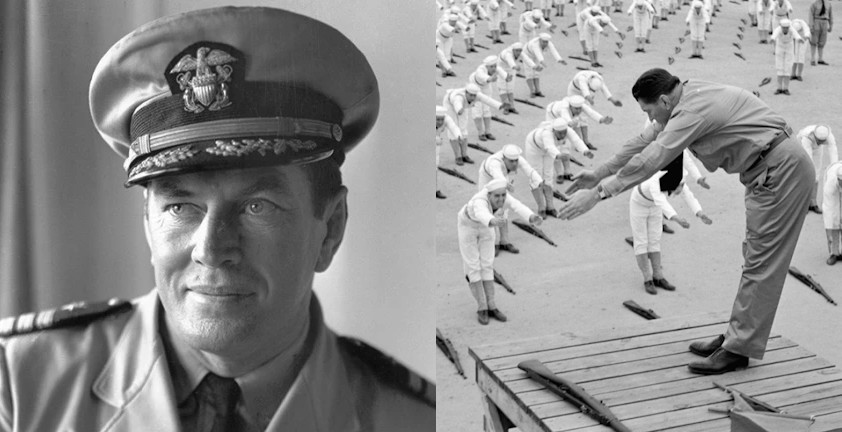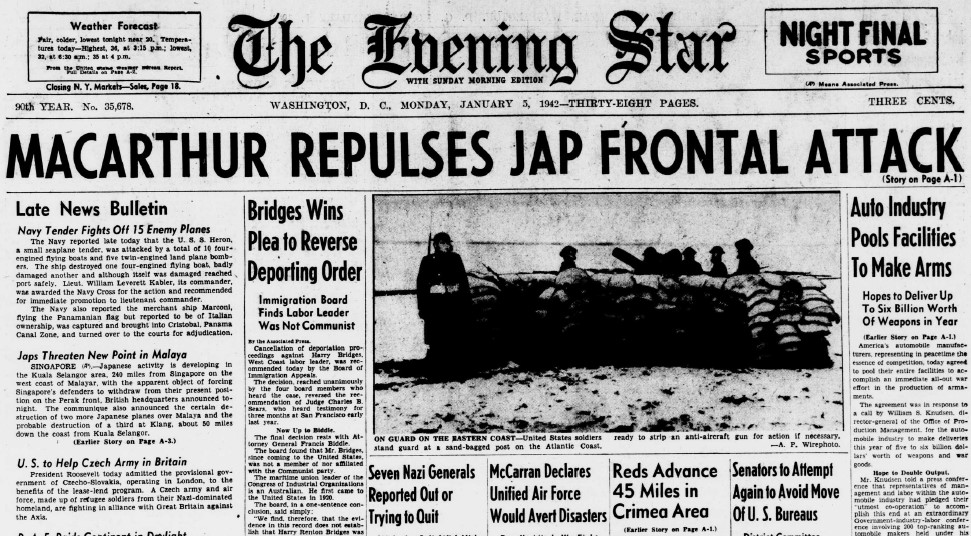World War II Chronicle: January 5, 1942
Click here for TODAY’S NEWSPAPER
Two weeks after issuing an order for German citizens to donate winter clothing to the troops freezing on the Eastern Front, Berlin announces they have gathered 1.5 million fur coats. Among the haul are articles from Paul von Hindenburg, Germany’s former president and top commander during the first world war, and flying furs from Max Immelman — Germany’s first ace.
By January 1942, Germany’s supply chain to Russia was a nightmare. Not only did materials have to traverse hundreds of frozen miles of primitive roads through hostile territory, many of the vehicles they once had no longer function (weather aside, there were virtually no maintenance opportunities) and the troops often had to resort to using captured horse-drawn wagons. Who knows how long it will take for the items to reach the front, or how much of the winter items actually get there. Regardless of nationality, soldiers have always been adept at appropriating items they feel would be of better use to themselves, and there were probably no shortage of very warm rear-echelon soldiers and officers. The Immelmann and von Hindenburg donations may have turned into souvenirs for well-connected officers, but who knows?
This report comes two days after Adolf Hitler’s call for Germans to turn in their skis. In this issue, the Associated Press reports that all German ski competitions have been canceled.
A photo on the top of page 5 shows new Pacific Fleet commander Rear Adm. Chester W. Nimitz congratulating sailors for their amazing rescue of a B-17 crew that had been lost at sea for three days. So heroic was the mission that Nimitz presented the crew members with medals less than 24 hours after their deeds.

Today’s sports section features a cartoon of Gene “The Fighting Marine” Tunney, former heavyweight champion of the world, now a lieutenant commander in the Naval Reserve. Tunney enlisted in the Marine Corps in 1918, sailing to France with the 5th Marine Expeditionary Brigade’s 11th Marine Regiment, which arrived too late in the war to see combat.
From the Marine Corps History Division’s biography on Tunney:
“While Tunney was on duty in the Intermediate Section of the American Expeditionary Forces he really commenced his athletic career with bouts held within his own organization. His first important scrap was at Romo Rantin just before the Armistice, when he defeated the representative of another section of the American Expeditionary Force. After the Armistice a very intensive program of athletics was begun throughout the American Forces. Part of this program was to determine the champion of the American Forces in the various classes of boxing. Tunney fought in the ‘light heavyweight’ class. In view of the large number of organizations there were necessarily many elimination bouts. Tunney, of course, fought many of these and did not lose a single one. The candidates for the championship of the various classes were reduced to six of each class. These final bouts were held at the Palais de Glace in Paris in the spring of 1919. The representatives of Tunney’s class were finally reduced to two, himself and one other. He defeated the other man and thereby become ‘Light Heavyweight Champion’ of the American Expeditionary Forces.”
“It was the rigid, clean, wholesome, manly training that I received when a member of the Marine Corps that fitted me for the boxing program,” Tunney said. After mustering out in 1919, “The Fighting Marine” was commissioned as a 1st lieutenant in the Marine Reserves in 1926 and promoted to captain the following year.
Once Navy Secretary Frank Knox called Tunney into service with the Naval Reserve in 1940, he was named Physical Director and Coordinator of Physical Education, initially charged with developing the athletic program for Naval Air Stations Pensacola. Jacksonville, and Corpus Christi.
Jimmy Doolittle is mentioned on the bottom of page 3… War Department Communique No. 45 is on page 5… Page 10 recounts the tale of the destroyer USS Aylwin, which got underway during the attack on Pearl Harbor despite only having 50% of the crew aboard and just four officers. In command was an ensign (Stanley B. Caplan, USNR) who had only been on sea duty for eight months… Sports section begins on page 18

